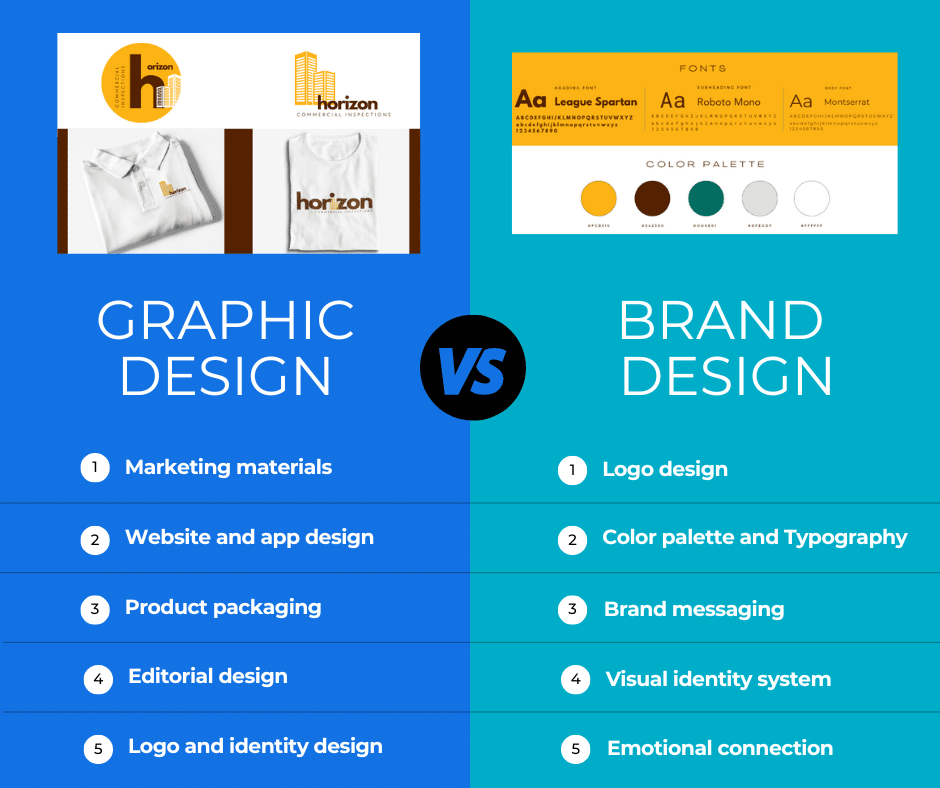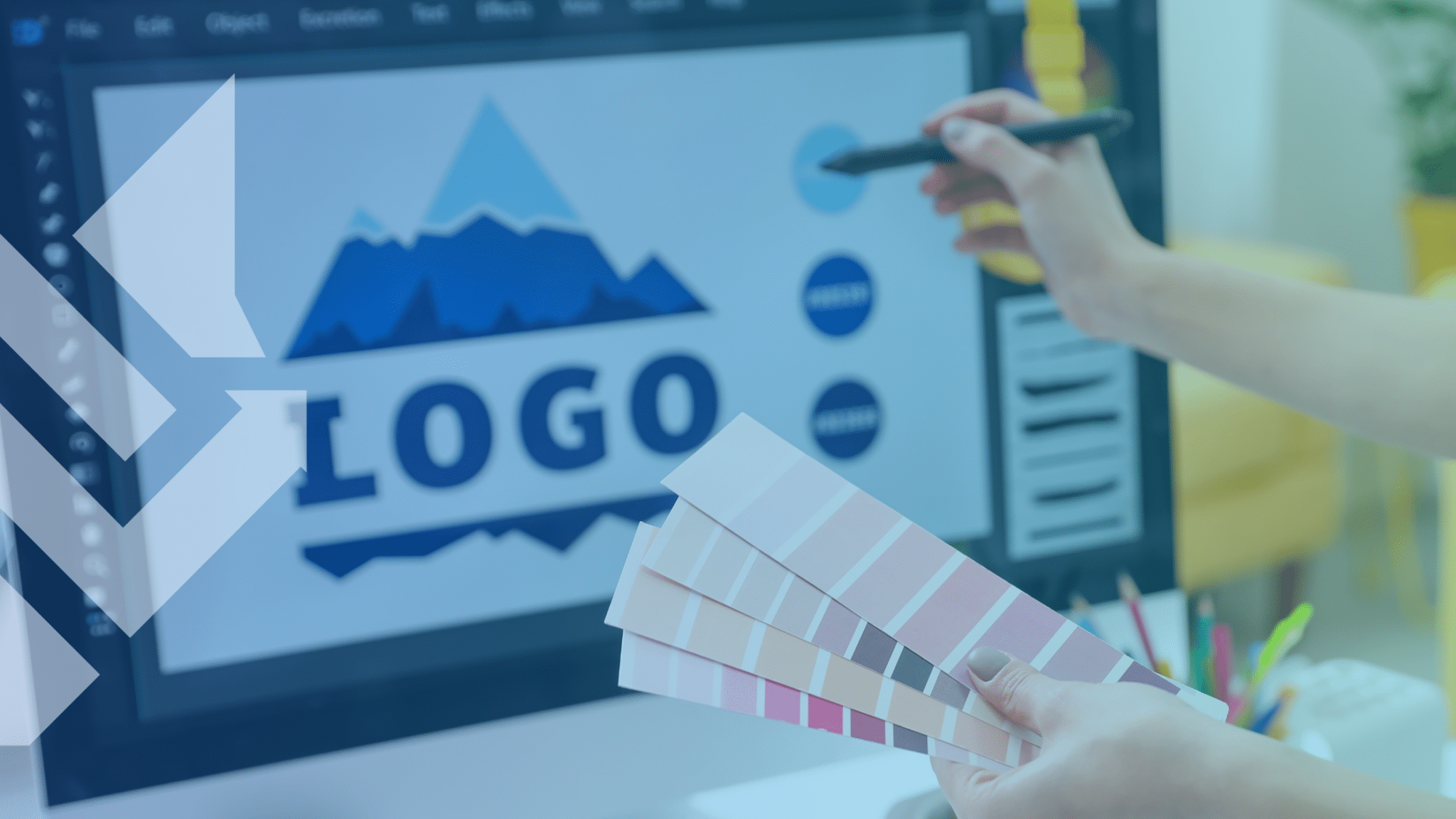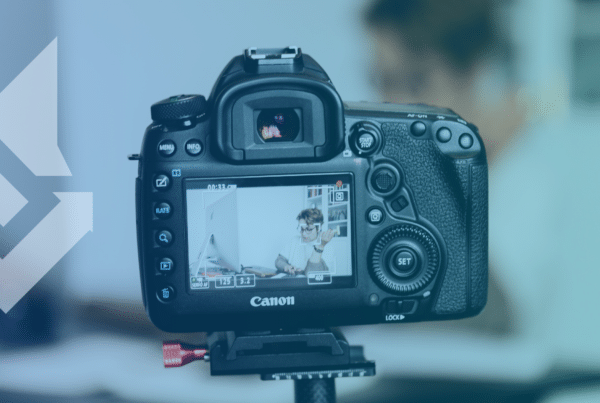Last updated on February 24th, 2025 at 10:47 pm
Branding and design are two words that often go hand in hand. When you see a company’s logo, website, or social media posts, you may assume a graphic designer was responsible for creating those visuals. But is brand design under graphic design, or are they separate disciplines? While graphic design plays a crucial role in branding, brand design is much more than just creating visuals. It involves strategy, messaging, and the overall perception of a business.
In this in-depth post, we’ll break down the differences between graphic and brand design, explore where they overlap, and help you understand when to hire a designer for each.
What is Graphic Design?
Graphic design is a creative field that focuses on visual communication. Graphic designers use colors, typography, imagery, and layout techniques to create eye-catching and effective designs that communicate a message.
Some common applications of graphic design include:
- Marketing materials – Social media posts, brochures, flyers, posters, and advertisements.
- Website and app design – User interface (UI) design, website layouts, banners, and infographics.
- Product packaging – Labels, boxes, and other packaging that enhance the consumer experience.
- Editorial design – Magazine layouts, book covers, and newspapers.
- Logo and identity design – While logo design is often associated with branding, many graphic designers specialize in creating logos as standalone projects.
Graphic designers primarily work on visual aesthetics rather than brand strategy. They ensure designs are visually appealing, engaging, and aligned with the company’s needs. However, they don’t typically handle brand positioning, storytelling, or long-term identity development, which are key aspects of brand design.

What is Brand Design?
Brand design is a more comprehensive and strategic approach to shaping a business’s identity. It involves crafting not just visuals but also the personality, tone, and perception of a brand. While graphic design is a tool within brand design, branding goes beyond just creating beautiful images—it focuses on building an emotional connection with an audience.
Key Elements of Brand Design:
- Logo design – A recognizable symbol or wordmark that represents the brand.
- Color palette – Specific colors chosen to evoke emotions and create consistency across all platforms.
- Typography – A curated selection of fonts that reflect the brand’s personality and tone.
- Brand messaging – The voice, tone, and key phrases used to communicate with an audience.
- Visual identity system – Guidelines that ensure consistency across all touchpoints, including social media, websites, packaging, and advertising.
- Emotional connection – The feelings and experiences associated with the brand that foster loyalty and recognition.
Since branding encompasses both visuals and strategy, brand designers consider customer perception, target audience, brand positioning, and storytelling when developing a brand identity.

How They Overlap
Since brand design includes visual elements, it naturally overlaps with graphic design. A brands designer may have graphic design skills, but their work extends beyond just creating graphics. They think holistically about how a business presents itself and how customers experience the brand across all channels.
Key Ways They Overlap:
- A business may hire a designer for one project, such as a business card, but a brand designer ensures that the business card aligns with the company’s broader identity.
- Consistency across platforms – Brand designers create guidelines that ensure all designs, from social media graphics to website layouts, maintain a unified look and feel.
- Visual storytelling – Brand designers use graphic elements (such as colors, typography, and imagery) to communicate a brand’s values, mission, and personality.
- Aesthetic appeal meets strategy – While graphic designers focus on making designs look visually pleasing, brand designers ensure that visuals align with a larger marketing and branding strategy.
The Key Differences Between Brand Design and Graphic Design
While they work together, they also serve different purposes. Here’s how they differ:
- Scope: Graphic design is about individual visual elements, while brand design covers an entire identity system.
- Focus: Graphic designers focus on aesthetics, while brand designers consider strategy, storytelling, and consistency.
- Longevity: Graphic design projects are typically short-term (e.g., a single social media post), while brand design establishes a long-term identity that guides all future projects.
- Emotional Connection: Brand design aims to create a feeling and experience that resonates with customers, while graphic design is more focused on visual appeal.
- Guidelines vs. Creativity: Brand designers set the rules (e.g., brand guidelines), while graphic designers often work within those rules to create specific designs.
Understanding these differences is essential when deciding whether you need a graphic designer, a brand designer, or both.
Do You Need Both?

For a business to succeed, both brand design and graphic design play a role. While graphic design ensures marketing materials are visually appealing, brand design creates a cohesive identity that builds recognition and trust.
When deciding between a graphic designer and a brand designer, it’s important to consider your business’s specific needs. If you need a one-time project, such as a flyer, poster, or digital ad, a graphic designer is the right choice. They specialize in creating visually appealing materials that align with your company’s existing look. If you already have a well-established brand identity but need someone to execute visuals for marketing campaigns, product packaging, or website layouts, a graphic designer can ensure everything remains aesthetically polished and professional.
On the other hand, if you are launching a new business and need to establish your brand identity from the ground up, a brand designer is essential. A brand designer will help you create a strategic and cohesive identity that goes beyond just visuals, ensuring your company has a distinct presence in the market. If you are rebranding and want to maintain consistency across all touch points, a brand designer can develop guidelines that unify your messaging, colors, typography, and overall presentation. Additionally, if your goal is to build a brand that resonates emotionally with your audience and fosters long-term customer loyalty, a brand designer will craft a strategy that aligns with your vision.
Conclusion
Is brand design under graphic design? Not exactly. While brand design uses graphic design as a tool, it goes much deeper. Designing a brand is about identity, perception, consistency, and strategy, whereas graphic design is focused primarily on visual aesthetics.
At Wolfpack Advising, we don’t just create beautiful visuals—we build brands that connect and convert. Our team combines strategic brand development with stunning graphic design to ensure your business makes a lasting impact.




